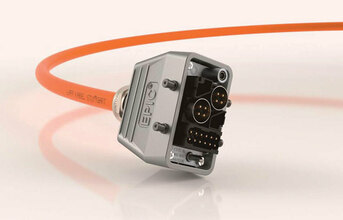
Industry 4.0 means that production is becoming more modular and flexible. Automotive manufacturers are already trialling scenarios in which machining stations are mobile and search for the parts to be machined themselves. The question is whether this subsequently makes cables and connectors redundant. Nothing could be further from the truth. "Cables and particularly connectors will be indispensable for a long time to come. If anything, their importance is likely to increase," says Martin Guserle, BE Head of EPIC at Lapp. Even if wireless communication brings about certain shifts, it will nonetheless remain limited to specialist applications on the factory floor. Cables are indispensable for enabling machines to communicate among each other quickly and free of interference - such as for transmitting sensor data in real time - or supplying power to drive systems.
What will change, however, is that these cables are more rarely hard-wired and more frequently connected. After all, machining stations are becoming increasingly modular and occasionally get rearranged depending on the product being manufactured on them. This requires connectors that can be quickly released and plugged in elsewhere again; these can replace the directwired variants which are still predominantly used in older facilities. It is certain that this will cause the number of connectors in industrial applications to rise further.
Industry 4.0 is thus not the goal of such measures, but rather a means to a much bigger end. It concerns meeting the greatest challenges that humanity faces, namely globalisation, digitalisation, sustainability and demographic changes. These topics give rise to a multitude of questions. How will we feed 7.5 billion people, let alone the 9.7 billion who will inhabit the Earth in 2050 according to the UN's forecasts? How will these people work if machines take on more and more jobs? And how will we shape progress in a way that is sustainable and conserves resources? Industrial companies can't just simply detach themselves from these mega-topics: they are required to contribute solutions in their respective sectors. This brings us back to connection systems. The Lapp Group has realised that it must always take these mega-topics into consideration when developing products. The example of connectors is intended to show where interrelationships exist.
(Continued on next page)


























